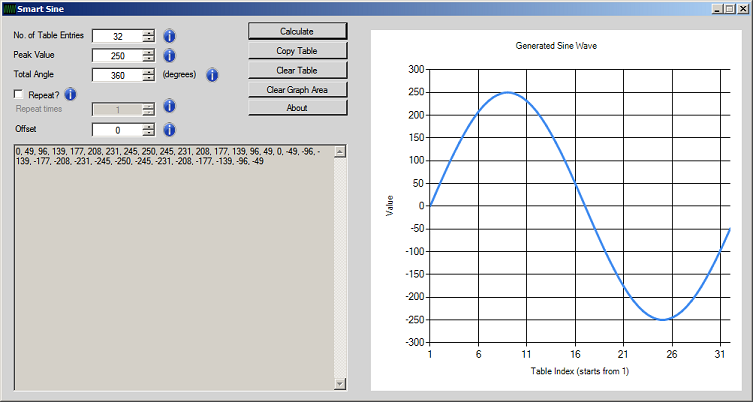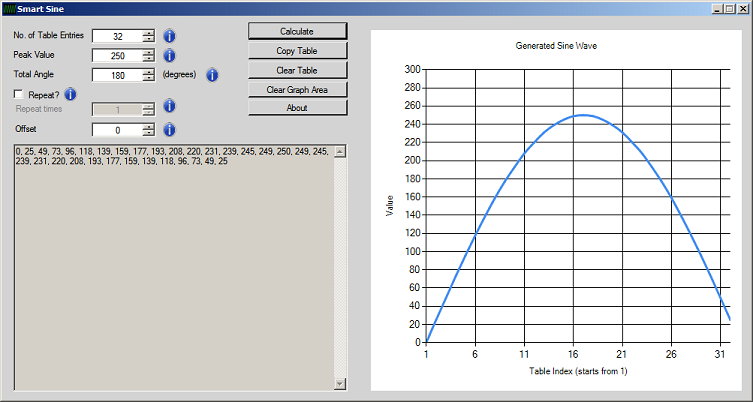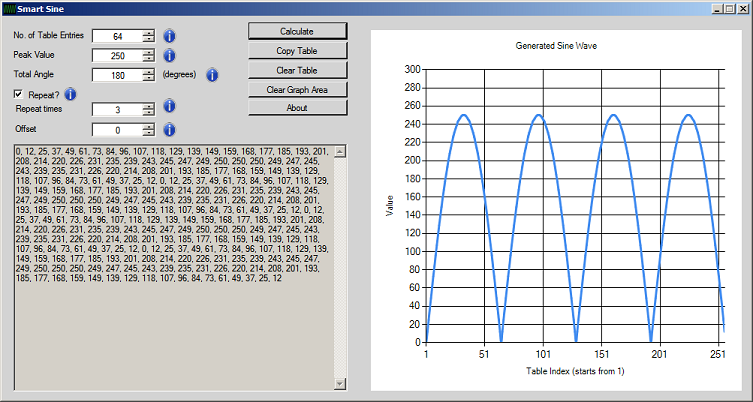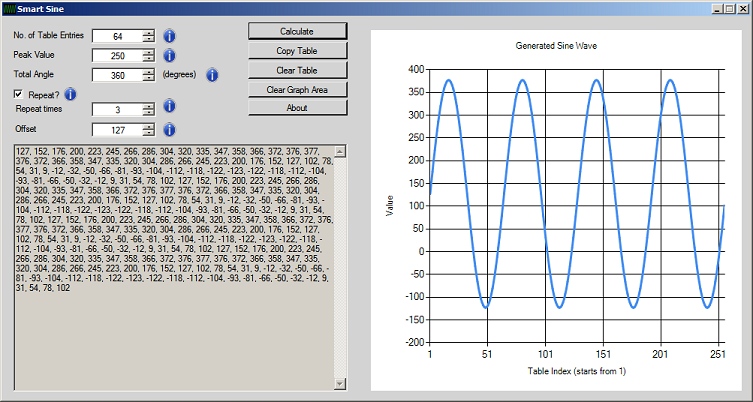Rockzinstruz
Junior Member level 2
Hi all...
If anybody have the sine wave 8-bit look table ..Please give post here.
Thanks
If anybody have the sine wave 8-bit look table ..Please give post here.
Thanks
Follow along with the video below to see how to install our site as a web app on your home screen.
Note: This feature may not be available in some browsers.
double TABLE [180] ;
#define PI 3.14159265
void R_TABLE (void)
{
for (double i = 0; i <=180; i = i+1)
{
TABLE[(int)i] = sin(i * PI /180);
}
}



Try increasing the number of dots in table you will get symmetrical ones for QuartersThe problem of the digital sinewaves are usually that they have an even number of dots
Counting is: 0,1,2,3,4,3,2,1 - but better was: 0,1,2,3,3,2,1,0